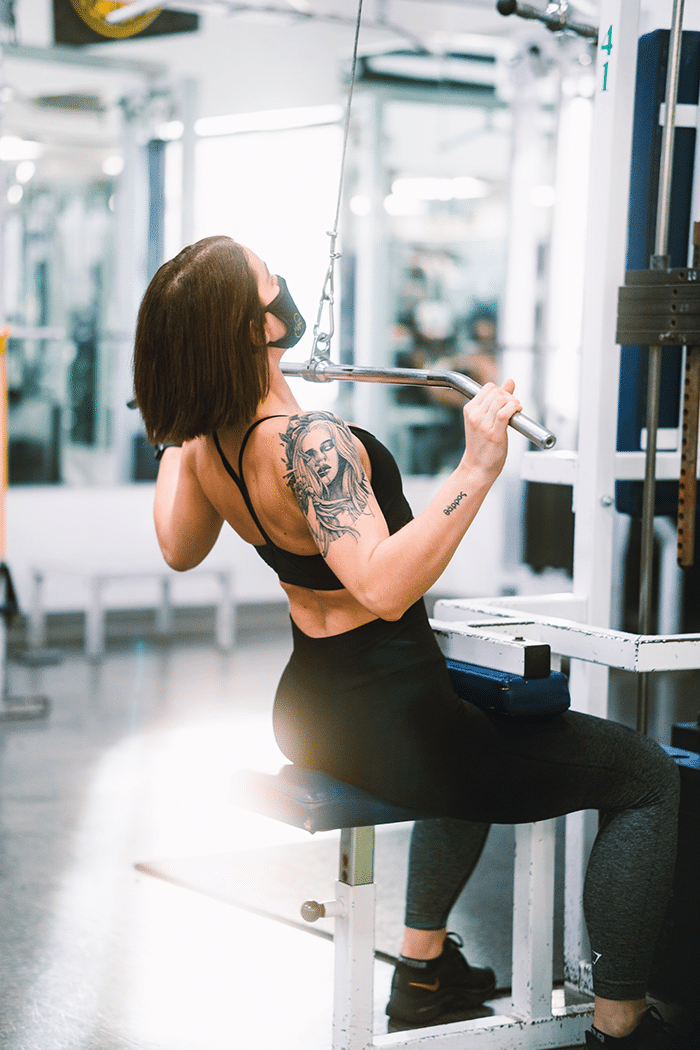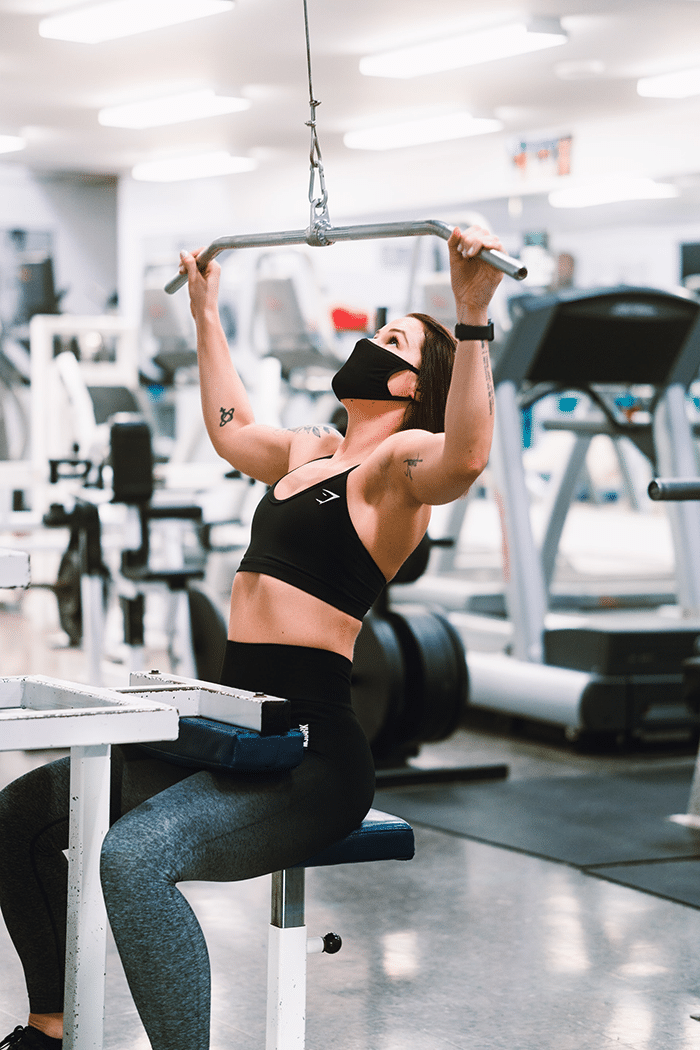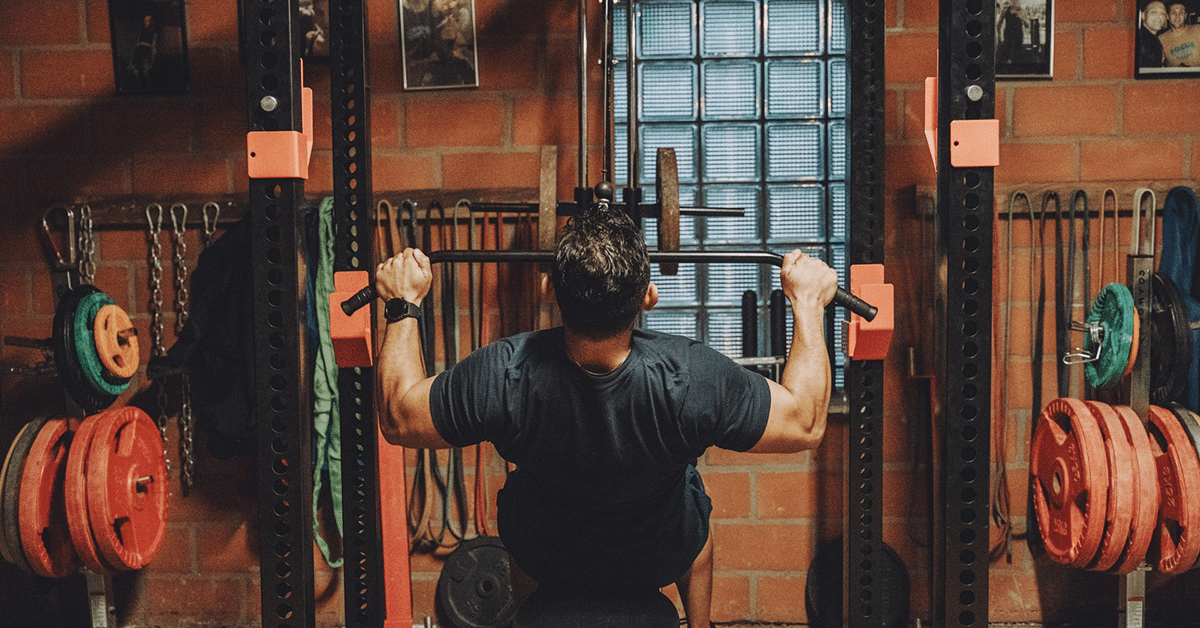How to Build a Huge Back with the Lat Pulldown – Benefits, Technique and Variations
This definitive guide will teach you everything you need to know about the Lat Pulldown.
What is the Lat Pulldown?
The Lat Pulldown is a cable pulling exercise that primarily builds muscle and strength for the back muscle groups.
- What is the Lat Pulldown?
- Muscles Worked by the Lat Pulldown
- Benefits of the Lat Pulldown
- How to Do a Lat Pulldown
- Lat Pulldown Training Tips
- Lat Pulldown Variations
- Lat Pulldown Alternatives
- Lat Pulldown Common Mistakes
- FAQs
- What does Lat Pulldown Work?
- Is Lat Pull Down for Chest?
- Are Lat Pulldowns Good for Lats?
- Is Lat Pulldown good for Shoulders?
- Are Pull Ups Better than Lat Pulldown?
- Are Lat Pulldowns Necessary?
- Is Wide Grip Lat Pulldown Better?
- Why are Lat Pulldowns so Hard?
- Do Lat Pulldowns Build Arms?
- Do Lat Pulldowns Work Rhomboids?
- What is the Best Grip for Lat Pulldown?
- How Far Down Should you Lat Pulldown?
- Learn More
Muscles Worked by the Lat Pulldown
Unsurprisingly the exercise mainly targets the lats.
It also works the:
- Grip
- Forearms
- Biceps
- Delts
- Core
- Upper Back
- Lower Back
The lats are one of the biggest muscle groups in the back. They contribute towards shoulder adduction and extension (pulling the arms towards and behind the body).
The movement also recruits the rear delts. Pulling the cable externally rotates the arms and works these important muscles.

Benefits of the Lat Pulldown
The exercise has many great benefits for athletes.
Build Muscle and a V Shaped Back
The Lat Pulldown is a staple exercise for almost every single hypertrophy training program that exists, and for good reason.
The exercise will help you build a muscular upper body.
Build Strength
The resistance and movement is an effective way to augment your back, shoulder and upper body strength. Remember to complete 3 – 5 sets of 3 – 6 reps with heavy weights if you want to build strength.
Isolate the Lats
The Lat Pulldown is one of the best ways to isolate and train the lats. You do not need to concentrate on other aspects of your body as much so you can focus completely on the lats. This allows you to further the mind muscle connection as well.
Improve Posture
The movement demands a straight spine and solid, upright posture. Not only is this good for your lifting and training in general, it will also carry over into your everyday. Strong posture will help you to avoid back pain and injury later on in life.
Enhance Shoulder and Elbow Flexibility
The full range of motion will test and improve your strength and mobility.
Help your Pull Ups
If you experience problems with Strict Pull Ups then this exercise can be a great way to assist. Stronger lats are a huge asset when it comes to hauling your body upwards with precision and control.
Another advantage is that you can change your grip to mimic the type of Pull Up / Chin Up that you want to improve. You can even practice with a neutral grip if you use the appropriate attachment handle for your Pulldowns.
How to Do a Lat Pulldown
Use the following instructions to master the technique.
- Adjust the weight stack to the appropriate setting and alter the knee pad to suit your height and body
- Sit down and wedge your thighs under the pads. Reach upwards and grab the bar with an overhand (pronated grip), slightly wider than shoulder width apart
- Outwardly rotate your shoulders and engage your lats
- Establish a slight bend in the elbows and take the slack out of the cable
- Inhale and brace your grip, core and glutes
- Move your shoulder blades back and down and pull your elbows towards your body to initiate the downwards movement
- Pull the bar downwards until the bar touches your collar bone. Pause for a second and squeeze your lats as tight as you can
- Slowly allow the bar to travel back to the starting position
- Exhale
- Repeat for the desired number of reps
Lat Pulldown Training Tips

Keep the Chest Proud
Stick your chest out during the entire movement. This will help you establish good posture and help the back muscles contract.
Squeeze your Shoulder Blades and Lats
Make sure that you work to activate your shoulders and lats. Think about how they contract and move throughout the full range of motion. Try to feel the movement and the way that they work. This will help you control them and maintain a stable, slow and powerful motion
Don’t Swing the Body
The idea of the exercise is for the back and lats to bear the brunt of the work. If a lifter uses momentum instead of control and strength to shift the weight then the exercise will lose its effectiveness.
If you find yourself having to swing the movement then simply lower the weight and get back to great form.
Maintain a Neutral Head Position
Keep a neutral head position with your eyes and gaze pointed forwards.
Lat Pulldown Variations
If you love the exercise and its rewards then try adding these variations into your training to further improve your gains and keep things challenging.
Standing Lat Pulldown
This variation changes the exercise from being an isolation movement. Now your entire body has to work to stabilise and control the weight, especially the core.
The slightly different torso angle (tilted a little further back) provides the benefits of a vertical and horizontal pull.
With this variation you won’t be able to lift as much weight.
One Arm Lat Pulldown
The main change here is that you transition into a unilateral exercise.
This will help to identify and destroy any weaknesses you have in your strength and mobility. We all generally have one limb stronger than the other and this variation is an effective way to remedy that imbalance.
Make sure to use a D handle instead. Rest the hand that is not working on top of your thighs.
You can also perform this with a band.
Hammer Strength Reverse Grip Lat Pulldown
For this version you can strengthen the lower lats by altering to an underhand (supinated) grip and placing your hands slightly narrower.
You can also do this on the cable machine but the specific Hammer Strength machine will create a smooth movement path where your only job is to maximise your strength and power output.
Straight Arm Pulldown
Straight Arm Pulldowns isolate the lats by taking away any effect from the biceps. Try programming them into your training after the standard Lat Pulldowns for maximum gains and fatigue for your lats.
These also target the lower lats.
Lat Pulldown Alternatives
These alternatives can be added into your training when you are unable to complete Lat Pulldowns due to a lack of equipment or any other reason.
Barbell Bent Over Rows
This tried and tested barbell exercise is renowned for building a thick and strong back. They utilise a horizontal pulling motion that teaches any athlete how to activate their lats properly.
Single Arm Dumbbell Rows
This unilateral rowing exercise can be performed on a bench or by supporting your weight on a dumbbell rack (a popular way to perform the exercise in the gym).
It is another excellent unilateral exercise for your lats, back, biceps and grip.
Incline Dumbbell Rows
This is a great exercise for beginners as they start to learn how to use, develop and strengthen their lats.
However, it is a useful exercise for all lifters. The Incline Dumbbell Row targets your traps, lats, and biceps brachii.
Additionally, it removes the stress from your hip extensors and back, making it easier to lift heavy weights and staying in total control.
Kroc Rows
An unusual alternative, Kroc Rows are typically performed with heavier weights.
A different type of Bent Over Row, they build your lats, trapezius, biceps, and obliques. These are a great heavy, finisher exercise to really push your lats to their limits.
Pull Ups
Pull Ups are one of the best bodyweight lats and back exercises that exists. They operate with the same pulling motion and are gentle on the joints.
All you need for Pull Ups is a bar or tree, so they can almost always be included into any workout.
They also benefit your grip, shoulders, core and forearms.
Slowly lowering your body during the movement will maximise time under tension and help you build muscle.
Lat Pulldown Common Mistakes
Make sure you aren’t making any of these mistakes.
Pulling the Bar Down and Away from Your Body
One common form flaw is that many lifters do not keep the bar close enough to their body.
If the bar is too far away then the exercise will transition into an odd kind of Pullover, which is not the aim. Additionally, a lifter in this position will not be able to optimally overload the lats.
Make sure the bar is as close as it can be to the body.
Leaning Too Far Back
An overexaggerated backwards lean will put unnecessary pressure on the spin and hinder the effectiveness of the movement.
It can be caused by weights that are too heavy or being seated too far forwards on the seat.
Swinging the Body
The Lat Pulldown should be done slowly, with perfect control. There should be no excessive use fo momentum.
This is almost always a sign that the weights being used are too heavy for the lifter.
The end result is that full body power will shift the load and the stress on the lats will be reduced. Consequently, the lats will not get stronger or bigger.
FAQs

If you have more questions, check out our answers.
What does Lat Pulldown Work?
The exercise works the lats (latissimus dorsi), shoulders, biceps, forearms and grip. It also establishes decent posture and longterm spinal health.
Is Lat Pull Down for Chest?
Not primarily no. However, it is an upper body pulling exercise so the upper chest is recruited in a small way.
Are Lat Pulldowns Good for Lats?
Yes, they are excellent for strengthening the lats and building muscle. They isolate the muscle group and allow the lifter to alter the grip and width of the hold to stimulate the muscle in different ways.
Combinate them with other highly effective back and lat exercises such as Deadlifts, Snatch Grip Deadlifts and Bent Over Rows for optimal results.
Is Lat Pulldown good for Shoulders?
Yes, the exercise is an efficient way to strengthen and improve the mobility of the shoulder joint and muscles. They can counteract bad, hunched postures as they train the body to depress and adduct (bring together) the shoulder blades.
This is a powerful foundational position for good back posture.
Are Pull Ups Better than Lat Pulldown?
Pull Ups are better for developing bodyweight strength and augmenting the grip, biceps, forearms and core.
Lat Pulldowns are better for isolating the lats however both exercises are exceptionally good for the lats.

Are Lat Pulldowns Necessary?
Lat Pull Ups are a staple for back strength and muscle development.
You can (and should) create excellent back workouts involving Deadlifts, Bent Over Rows and Pull Ups but the Lat Pulldown has a deserving place alongside those exercises.
Is Wide Grip Lat Pulldown Better?
The wide grip is better for lat activation.
The standard and close grip are better for pulling more weight.
You will isolate the lats during both variations.
Why are Lat Pulldowns so Hard?
The exercise is hard because the muscles that do most of the work (the lats) are isolated.
The bar is also in motion so you have to work hard to stabilise it.
Do Lat Pulldowns Build Arms?
Yes, the exercise does build muscle and strength for the biceps and forearms.
Do Lat Pulldowns Work Rhomboids?
Yes, the movement does work the rhomboid muscles, located on your upper back.
Their purpose is to draw the shoulder blades towards the spine. The traps themselves also help to pull the shoulder blades downwards.
What is the Best Grip for Lat Pulldown?
The best grip is pronated, with hands slightly wider than shoulder width apart.
How Far Down Should you Lat Pulldown?
You should pull the bar down until it touches your chest.
Learn More
Learn more about different types of shoulder movements or ways to strengthen your arms.





Comments are closed.